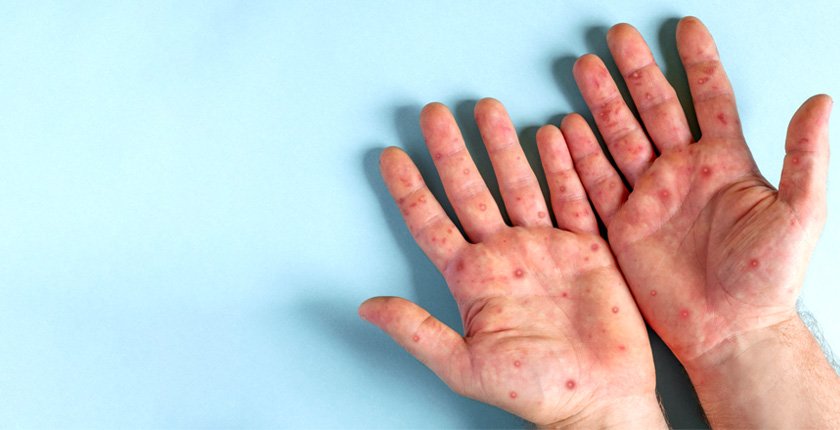
DEMYSTIFYING VITILIGO: CLEARING MISCONCEPTIONS AND STATING THE FACTS
Introduction
Vitiligo, a skin condition characterized by the loss of skin colour, often leads to misconceptions and misunderstandings. In this informative blog, we aim to provide accurate information about vitiligo while debunking common myths. Join us as we uncover the truth about this condition and why consulting a dermatologist at Cutis Hospital is the key to healthier skin.
Understanding Vitiligo: Causes and Characteristics:
Vitiligo is a skin disorder that results in the loss of skin pigmentation, typically appearing on the hands, forearms, feet, and face. It occurs when pigment-producing cells cease to function, often due to immune system issues. In recent times, numerous misconceptions have surrounded vitiligo, leading to unwarranted doubts and misconceptions. This blog seeks to provide clarity by presenting essential facts about the condition and dispelling myths that persist.
Separating Myths from Facts:
Myth: Vitiligo and leucoderma are the same
Fact: Vitiligo stems from an autoimmune condition without any prior illnesses. Conversely, leucoderma is a condition that may manifest as a symptom of diseases like vitiligo, systemic sclerosis, lichen sclerosis, post-traumatic scarring, and more.
Myth: Only dark-skinned people are affected by Vitiligo
Fact: The occurrence of vitiligo is not determined by skin colour. It affects individuals of all races, irrespective of their skin tone. However, it may be more noticeable in individuals with darker skin.
Myth: Vitiligo only affects the skin of the face and hands
Fact: Vitiligo primarily affects sun-exposed areas of the skin, including the hands, arms, lips, feet, and face. Additionally, it can manifest in less obvious areas such as the armpits, rectal region, groin, nasal passages, mucous membranes, and even the retina of the eyes. Hair in vitiligo-affected areas may also turn white.
Myth: Dietary choices worsen vitiligo
Fact: There is no established link between dietary choices and vitiligo. The condition is not influenced by food preferences.
Myth: Various oils and supplements can cure vitiligo
Fact: Dermatologists emphasize that there is no cure for vitiligo. However, it can be effectively managed with the right supplements and corticosteroid creams. Seeking treatment from experienced dermatologists at Cutis Hospital is essential for maintaining healthy skin.
Myth: Various oils and supplements can cure vitiligo
Fact: Vitiligo is neither infectious nor contagious. Avoiding individuals with vitiligo does not protect against the condition.
Myth: Vitiligo sufferers experience mental or physical disorders.
Fact: Vitiligo itself does not lead to physical or mental disorders. Most individuals with vitiligo lead healthy, vibrant lives. However, they may be more susceptible to autoimmune disorders like adrenocortical insufficiency, alopecia areata, thyroid disorders, and pernicious anaemia. Regular check-ups with dermatologists at Cutis Hospital ensure proper skin care.
Myth: Vitiligo spontaneously heals over time
Fact: Vitiligo is an autoimmune disorder causing depigmented patches on the skin. To effectively manage vitiligo and prevent worsening, it is crucial to consult a dermatologist for treatment.
Conclusion:
Instead of relying on internet searches for solutions, consulting a dermatologist is the most effective way to address vitiligo and receive personalized care. Trust the expertise of dermatologists at Cutis Hospital to guide you toward a healthier and more confident you. Schedule your appointment today to embark on your journey to healthier skin.
FAQs About Demystifying Vitiligo
1. Is vitiligo contagious?
No, vitiligo is not contagious. It’s an autoimmune condition where the body’s immune system attacks melanocytes, the cells responsible for producing skin pigment, leading to depigmentation patches.
2. Does sun exposure worsen vitiligo?
Sun exposure can exacerbate existing vitiligo patches, making them more noticeable due to the contrast between pigmented and depigmented areas. Adequate sun protection is essential to prevent further damage.
3. Can vitiligo be cured?
As of now, there is no known cure for vitiligo. However, topical corticosteroids, phototherapy, and depigmentation therapy can help manage and minimize its appearance.
4. Is vitiligo only a cosmetic concern?
While vitiligo primarily affects the skin’s appearance, it can have significant psychosocial impacts, leading to decreased self-esteem and quality of life for some individuals. Balancing the physical and emotional aspects of living with vitiligo is crucial.
5. Does diet play a role in managing vitiligo?
While certain dietary factors may influence overall skin health, there’s limited scientific evidence to suggest that specific diets can directly impact vitiligo development or progression. However, a balanced diet rich in antioxidants and nutrients may support overall skin health.
6. What causes vitiligo?
The exact cause of vitiligo is unknown, but it is believed to involve a combination of genetic, autoimmune, and environmental factors. The immune system mistakenly attacks the melanocytes, leading to the loss of pigment in the skin.
7. Can children develop vitiligo?
Yes, children can develop vitiligo. While it can occur at any age, the onset is most common before the age of 20. Early diagnosis and management can help minimize its impact.
8. Is there a link between vitiligo and other autoimmune diseases?
Yes, there is a higher prevalence of vitiligo in individuals with other autoimmune diseases such as thyroid disorders, type 1 diabetes, and rheumatoid arthritis. This suggests a potential link between vitiligo and autoimmune conditions.
9. How is vitiligo diagnosed?
Vitiligo is usually diagnosed through a physical examination of the skin. A dermatologist may use a Wood’s lamp (UV light) to look for patches of depigmented skin. In some cases, a skin biopsy or blood test may be performed to rule out other conditions.
10. Are there any lifestyle changes that can help manage vitiligo?
While lifestyle changes cannot cure vitiligo, they can help manage its appearance and progression. Using sunscreen to protect the skin, avoiding tanning beds, and reducing stress through relaxation techniques can be beneficial.
11. Can vitiligo spread to other parts of the body?
Yes, vitiligo can spread to other parts of the body. The rate of spread varies among individuals, with some experiencing rapid progression while others have stable patches for years.
12. Are there any psychological support resources for people with vitiligo?
Yes, there are psychological support resources available for people with vitiligo. Support groups, counselling, and therapy can help individuals cope with the emotional and social challenges associated with the condition.
13. Is vitiligo more common in certain ethnic groups?
Vitiligo affects individuals of all ethnicities, but it may be more noticeable in individuals with darker skin due to the contrast between pigmented and depigmented areas.
14. Can makeup be used to cover vitiligo patches?
Yes, makeup and cosmetic products specifically designed for skin coverage can be used to conceal vitiligo patches. These products can provide a more uniform skin tone and boost confidence.
15. What research is being done to find a cure for vitiligo?
Research on vitiligo is ongoing, with studies focusing on understanding the genetic and autoimmune aspects of the condition. New treatments, such as targeted therapies and stem cell research, are being explored to find more effective ways to manage and potentially cure vitiligo.







